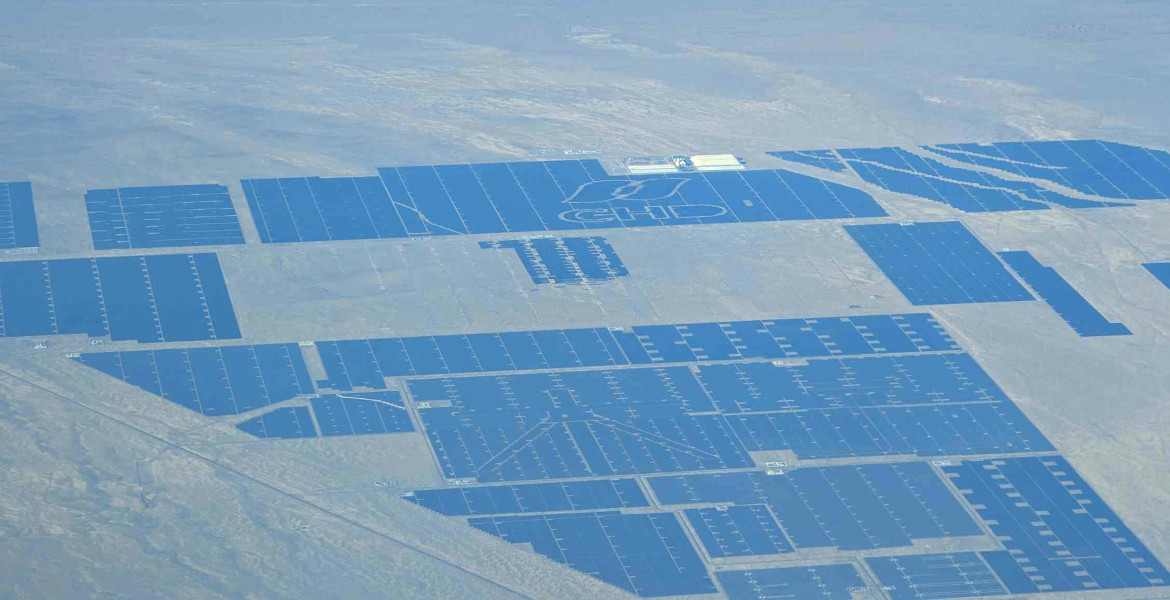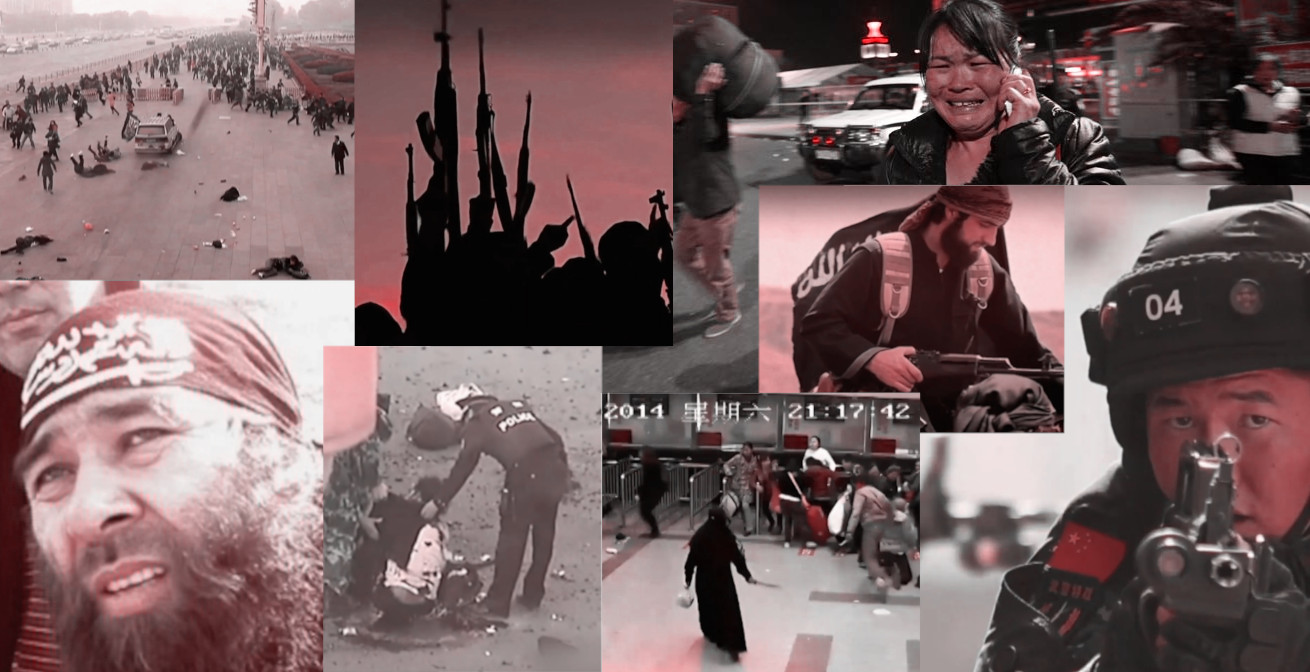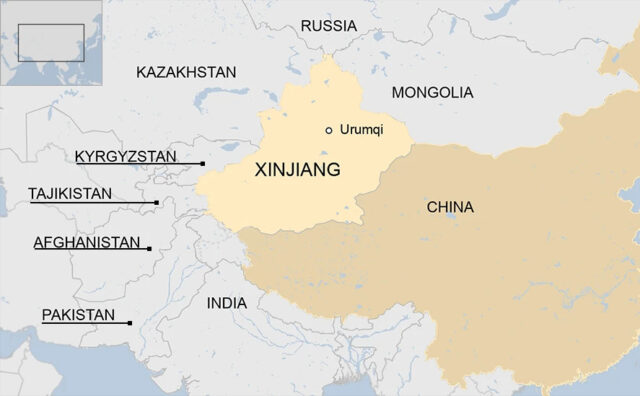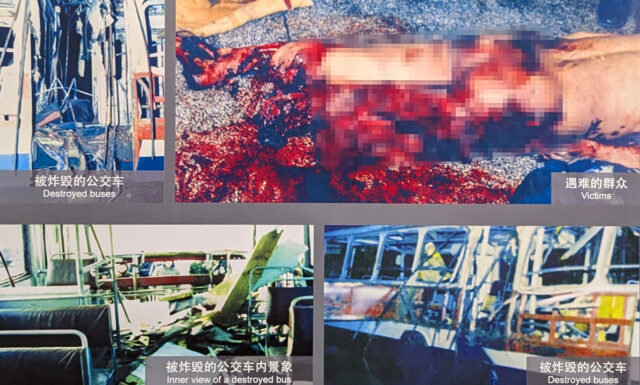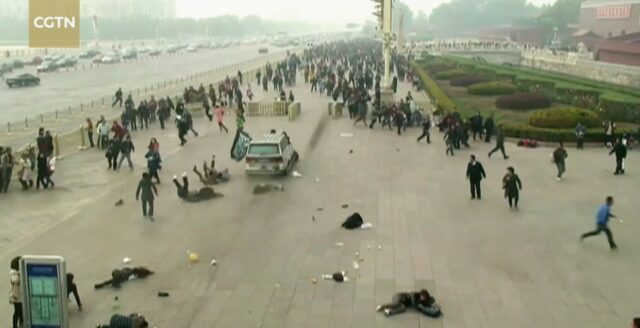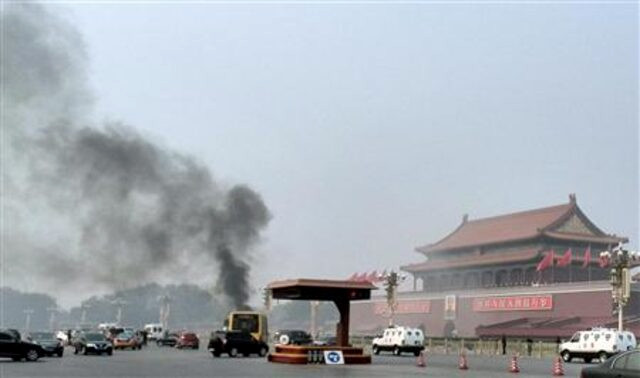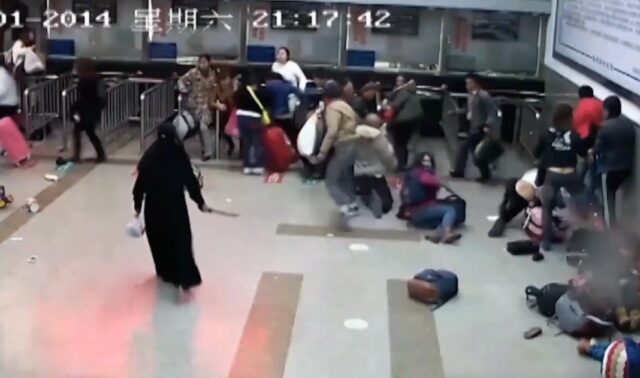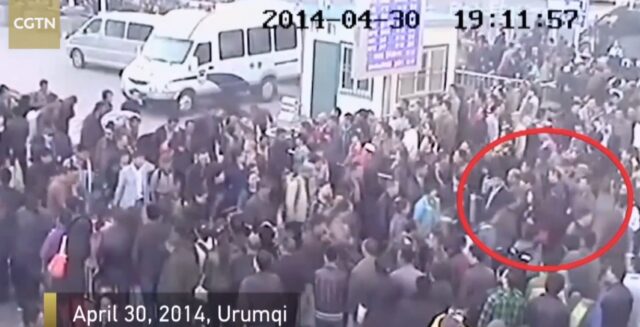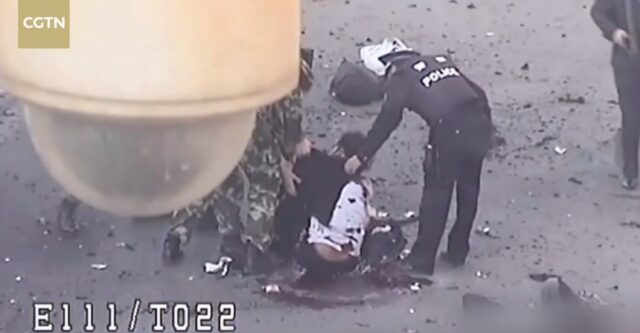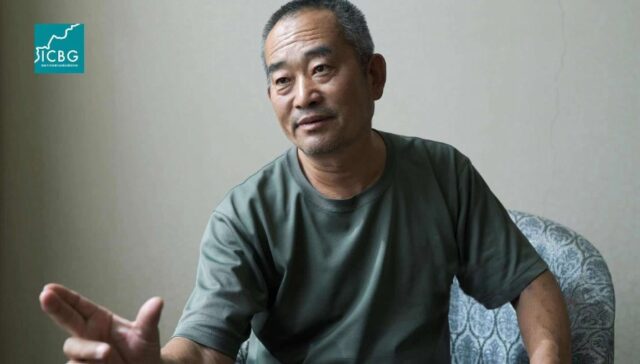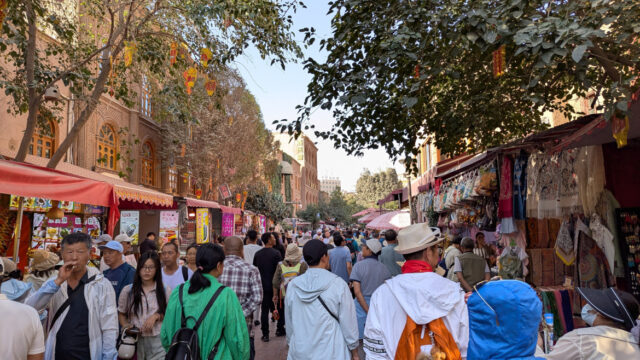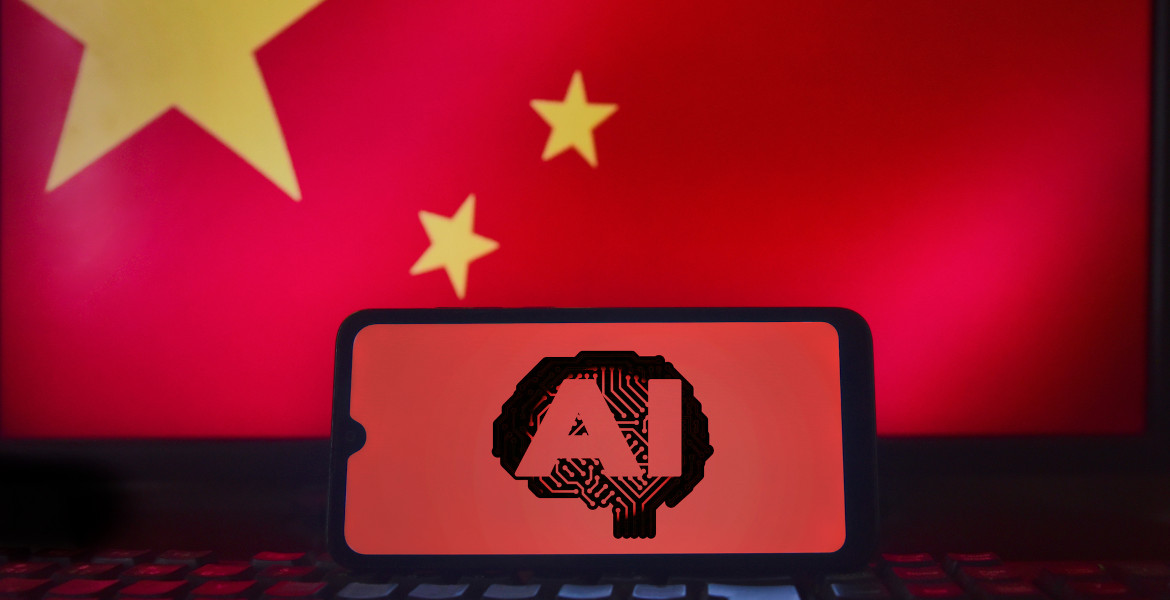In mid-May, I was fortunate to be part of an international delegation visiting the Chinese Autonomous Region of Xizang (XAR), also known as Tibet. Over the course of five days, we visited two cities: Lhasa, the capital of Xizang, and Shigatse, the second largest city in the region.
Before the trip, I realized that I had very little idea of what daily life in Tibet was like, both in the cities and in the countryside. Suspecting that I was not alone in this, I decided to do my best to share my experience with others. And so I armed myself with (rented) the popular Fujifilm X100F fixed lens camera, determined to capture every inch of my Tibet experience.
By the time I returned home, I had taken nearly 3,000 photos, most of them quite useless, not only due to my inexperience as a photographer, but also due to the fast pace of our stay; in five days we visited so many great sights and points of interest - including museums, attractions, restaurants, businesses, institutions, and more - that I think we must have set some sort of record!
Some of these experiences I would now like to share with you in a series of articles that I have decided to call Tibet in Pictures, where I will present some of the better photos that I took during our adventure. The articles will also include more than a few photographic contributions from other members of the delegation, for which I have of course obtained their permission and to whom I extend my thanks. This first part of the series will be about Xizang's capital: Lhasa - The Sunlight City.
Breathtaking views
Needless to say, crossing a significant part of Eurasia from Sweden to Tibet is a bit of an ordeal. After upwards of 30 hours in transit, I finally arrived at Lhasa Gonggar Airport, which is located at an altitude of about 3,600 meters and about an hour's drive from downtown Lhasa.
Stepping off the plane, I was immediately struck by the dramatic landscape in the form of the Himalayan mountains. Being constantly surrounded by such high and beautiful mountain peaks is exhilarating and something that never got old during my stay. I wondered if the locals would eventually find their home environment mundane, or if they too were constantly in awe of their majestic surroundings, and how this unique environment might influence the evolution of their culture.
But the breathtaking views come at a price. Above 3,000 meters and beyond, the thinning atmosphere poses an increasing challenge to visitors, who can experience headaches, nausea, and fatigue due to the lack of oxygen. Although one tends to adapt eventually, I learned that even the locals are not completely immune to the effects of these unfavorable atmospheric conditions.
Fortunately, the minibus that took us from the airport to Lhasa City was equipped with a system that delivered oxygen directly into our noses! Excited to begin our adventure, we boarded the minibus and headed towards Lhasa.
Lhasa - The Sunlight City
Lhasa prefecture is located roughly in the center of the Qinghai-Xizang Plateau at an approximate elevation of over 4,000 meters, covering an area of approximately 30,000 square kilometers and home to approximately 900,000 people. The history of Lhasa, which means holy land in Tibetan, dates back to the 7th century, and is the political, economic, cultural and logistic center of Xizang Autonomous Region (XAR).
Along with the challenges of the thin atmosphere, the high altitude also brings certain advantages, such as clear weather. With an average of 3,000 hours of sunshine per year, Lhasa has earned its nickname: The Sunlight City. During my almost week-long stay, I experienced nothing but clear blue skies with fluffy white happy clouds and bright sunlight - something I really enjoyed after having just endured many months of gloomy Swedish fall and winter.
As I entered downtown Lhasa, some of my main first impressions as seen through the window of our minibus, were the following: brand new cars, roads, bridges and viaducts, lots of mopeds, funny "lotus-style" street lamps, modern high-rise apartment buildings, many of which were under construction, modern shops, including some huge malls - all intertwined with the distinct traditional Tibetan architectural style that was, of course, ubiquitous throughout.
While I did my best to take in all the new impressions with my senses as well as my camera, we were heading at full speed to our first destination: The Lhasa No. 8 Middle School.
Lhasa No. 8 Middle School
With about 2,000 students, most of them boarders, No. 8 is the largest middle school in Lhasa, and probably in all of Xizang. The name of the school has nothing to do with the number of middle schools in Lhasa - it's just a name, and my guess is that it's called No. 8 because eight is considered a lucky number. However, I was not able to verify this hypothesis during my stay, as there was so much else going on which required my attention!
For starters, the pomp with which our delegation was received by the school was a surprise to me, albeit a pleasant one. After receiving our khadas, a type of white scarf used in Buddhist ceremonial contexts, and participating in the welcome ritual of throwing barley grains and flour over one's shoulder, we were greeted by students dressed in traditional garb who danced, sang, and played traditional Tibetan music for us as we entered the school. I had never personally experienced anything like this and it was a beautiful and exhilarating experience that will stay with me for a very long time.
Once inside the school, we were led through many classrooms full of students engaged in a wide range of activities, including arts and crafts, botany, music, literacy in both Tibetan and Chinese, engineering, robotics, and artificial intelligence. Our visit also included the canteen and student dormitories, which were not luxurious, but certainly adequate. The visit ended as grandly as it began, with a traditional Tibetan opera performance by the students.
With many stops left on the day's itinerary, we said our grateful goodbyes to the principal and the school and headed to our next destination, the Tibet Museum.
Tibet Museum
After its first opening in 1999 and subsequent major renovation in 2017, made possible by a national investment of 660 million yuan, the formidable Tibet Museum now covers a total area of over 60,000 square meters. With over half a million cultural artifacts in its catalog, the museum has certainly earned its designation as a "national first-class museum and a national AAAA-level tourist attraction".
Guided by the goal of conducting research, education, scientific protection and cultural creativity based on the characteristic Tibetan culture, the museums basic exhibitions include Snowy Land Long Song - Tibetan History and Culture, People Closest to the Sun - Tibetan Folk Culture. There is also a special exhibition called Snowy Land Monument - Tibetan Revolutionary Cultural Relics. The museum also provides public cultural services such as a children's experience hall, cultural creativity experience hall, multi-functional lecture hall, 4D cinema, viewing platform, coffee and catering.
Needless to say, this is more than can be experienced in a few hours visit. What I did manage to capture, however, can be seen in the image slider below.
After that cultural deep-dive, it was time to visit a local business - The Treasure of Tibet Yak dairy company!
Treasure of Tibet Yak Dairy
Adapted to the high altitude and harsh conditions, over ten million yaks populate the Tibetan landscape, outnumbering the human population by a factor of about 3 to 1.
After spending just a little time in Tibet, it becomes clear that it is difficult to overstate the importance of the yak in Tibetan culture and economy, both historically and today."We eat every part of the yak", one local told me, a claim I have no reason to doubt. In addition to food, they are also used for textiles and (especially historically) for transportation and agriculture, as well as probably countless things I am not yet aware of.
In terms of milk production, the yak is less productive than the common dairy cow in terms of volume. Nutritionally, however, yak milk is superior to ordinary cow's milk, resulting in many potential health benefits, according to recent studies.
Below are some photos from our visit to the Treasure of Tibet Yak Dairy Company, which is involved in the development, production and sale of yak milk products.
During my visit, I heard that the word for "child" in Tibet is actually the character for "yak" twice in a row, as in "yak yak". The explanation was that the word "yak" also means "lucky", "precious" or "auspicious" in Tibetan, so the word for "child" in Tibetan is literally "lucky", "precious" or "auspicious" yak! This new knowledge really confirmed for me the central role of the yak in Tibetan culture.
Tibet Academy of Thangka
Our next stop was the Thangka Academy, dedicated to the art of thangka painting, where we got a thorough overview of how these special paintings - which are an indispensable part of Tibetan culture - are made.
Painted with carefully prepared mineral pigments that don't easily disintegrate, thangka paintings virtually never lose their color.
After all these enlightening experiences, it was time for dinner before the main event of the evening - and in my personal opinion, the undisputed highlight of the entire stay - the Tibetan opera performance Princess Wencheng.
Princess Wencheng: Ancient wisdom and sublime beauty
Princess Wencheng is an open-air live-action drama performance that tells the story of Princess Wencheng of the Tang Dynasty's marriage to the Tubo King Songtsen Gambo 1,300 years ago. The performance is divided into five acts: The Charm of the Tang Dynasty, The Heavenly and Earthly Buddhist Sound, The Great Beauty of Tibetan Dance, The God of the Plateau and The Harmony Between the Tibetans and the Han.
"I don't want to hype it too much, or you might be disappointed, but I don't think you will be", one of our Chinese guides told me as we approached the Princess Wencheng Theater arena. Not knowing what I was about to experience, I didn't know exactly what to make of his statement at the time, although I had a feeling that my friend's concern was unfounded.
"Unfounded" turned out to be a serious understatement. Just walking into the arena and looking across the vast outdoor stage with its dramatic, natural mountainous backdrop gave me goose bumps before the show even started. The show itself was a display of such overwhelming and majestic beauty that I find it virtually pointless to try to put it into words - or capture it with my camera. I had not even known that such large scale performances existed, let alone experienced them first hand.
The performance was in Tibetan, of course, but large screens on either side of the outdoor stage provided the audience with translations in both Chinese and English. Although it was difficult for me to fully follow the story, the poetic nature of the lyrics that I was able to read, combined with the beautiful operatic singing and absolutely awe-inspiring visuals, created what was undoubtedly one of the most intense and profound cultural experiences of my life. It was as if the essence of the profound wisdom and sublime beauty of the Tibetan civilization emerged from the depths of history and expressed itself to me in the form of this amazing performance. I left the theater shaken, but at the same time invigorated by the kind of energy that only a true artistic experience can provide; one that rejuvenates one's belief in the goodness and beauty of the human spirit and gives one hope for humanity's shared future.
I will share some of the pictures I took during the performance, but please know that they in no way reflect what it was like to be there. It is a mystery to me why this opera is not better known throughout the world, and I would highly recommend it to anyone who has the opportunity to see it.
Completely mind-blown by the performance, and full of the myriad impressions from my first day in Tibet, I went back to the hotel to get a few hours of sleep before the next day's adventures.
Visiting the Potala Palace
When I woke up the next day, I felt absolutely terrible from lack of sleep, but more importantly from lack of oxygen. I felt so bad that I thought I would have to skip our upcoming visit to the Potala Palace, which of course would have been a terrible shame, as the Potala Palace is the definitive must-see attraction in all of Tibet. Fortunately, one of the other delegates offered me a large dose of Korean ginseng (that stuff is amazing!) which, along with a large dose of oxygen, made me feel better within a few hours. And so I was able to join the others as we made our way to the Potala.
Construction of the Potala Palace was begun in 1645 by the 5th Dalai Lama, Ngawang Lobsang Gyatso, and completed in 1694, some 12 years after his death. Located on Marpo Ri, the "Red Hill", the palace resembles a great fortress with it's towering white walls. When the Potala Palace was inscribed on the UNESCO World Heritage List in 1994, it was decided that buildings around the palace should not exceed 21 meters in height so as not to diminish its stature in the area.
Walking up the beautiful, scenic path to the palace, I learned that the building's white color comes from paint mixed with milk and honey, and it's red color comes from paint mixed with saffron. Apparently, thousands of volunteers gather every year to help maintain the condition of the palace by helping to paint it. This gives you an idea of how important the Potala is to the people, something that becomes even more apparent when you enter the palace, as people from near and far flock to the palace. Despite the regulations that have been put in place to limit the number of daily visitors, it tends to be very crowded, and so it was when we visited.
On a guided tour of the palace, we visited "only" 100 of the Potala's approximately 1000 rooms. I can report that every room we visited was decorated from floor to ceiling with colorful, intricate wood carvings, and that all kinds of exquisitely crafted artifacts, ancient scrolls and manuscripts, and large statues made of various precious metals were found throughout the palace. Despite the heavy crowds, with visitors sometimes lying flat on the floor praying, the visitors were patient and tolerant of each other, and I did not sense any pushing or even the slightest annoyance or frustration from anyone throughout the tour, which I found quite remarkable under the circumstances.
It is forbidden to take photos inside the palace. However, some photos from outside the palace can be seen in the image slider below.
The world's children's books - in Tibetan
Our last stop in Lhasa was not a major landmark or tourist attraction, but a children's library and bookstore that specializes in translating children's books from around the world into Tibetan.
During a long and engaging conversation, we naturally suggested to the owner of the bookstore that Astrid Lindgren's books in Tibetan were a must for his bookstore!
Next stop: Shigatse
After exploring as much of Lhasa as we could in two days, we headed to Shigatse, the second largest city in Tibet, which is even higher than Lhasa. This part of the trip will be covered in the second part of the Tibet in Pictures series, which will be out in the coming months.
Gustaf Lansner
Project Manager, The Belt and Road Institute in Sweden
Gustaf Lansner is a Project Manager at BRIX - The Belt and Road Institute in Sweden


















































































































































































































































































































